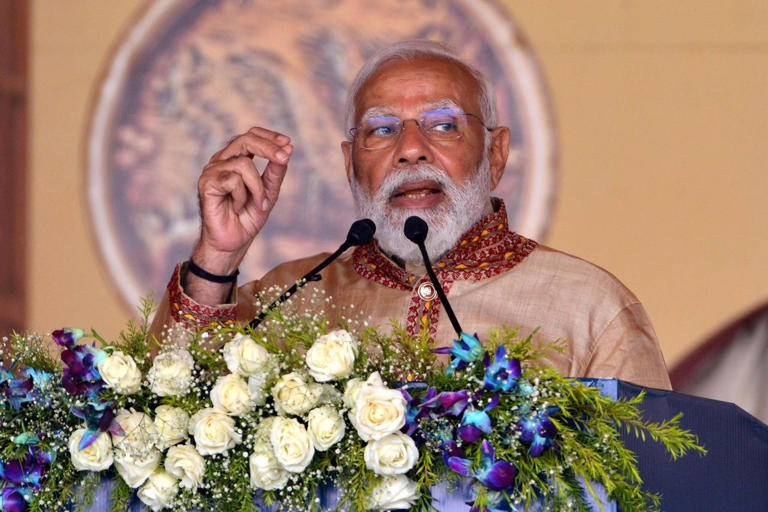
When India’s largest conglomerate, Tata Group, broke ground on a $11 billion semiconductor factory this week, Prime Minister Narendra Modi said the country was poised to become a world leader in the sector.
He might be in for a rude awakening.
Tata isn’t going it alone, which raises the probability of success. It will partner with Taiwan’s Powerchip Semiconductor Manufacturing to make older-generation, mature-node chips, which have features measuring 28 nanometers or wider.
The problem is that China, whose ambitions in cutting-edge chips have been stymied by U.S. and European export controls, is pouring capital into legacy chip making on a breathtaking scale. That will compress margins for everyone—and make life especially difficult for new small-scale players.
China will add more chip-making capacity than the rest of the world combined in 2024, according to research consulting firm Gavekal Dragonomics: one million more wafers a month than in 2023—all mature nodes. Tata plans to make 50,000 wafers a month. Industry tracker TrendForce projects that China’s share of global mature-node production will grow from 31% in 2023 to 39% in 2027.
China’s aggressive expansion comes at a time when the market for legacy chips is already well supplied. The artificial-intelligence revolution is supercharging demand for advanced chips, but older ones are another matter. Utilization rates for producers of mature-node chips have fallen from nearly 100% in 2020 to 65-75% at present, according to Gavekal.
China’s government incentives—worth more than $150 billion—will help producers absorb losses. But India would struggle to shower such a capital-intensive infant industry with that kind of cash, especially given its already high government debt and enormous funding needs for infrastructure in general. Those infrastructure challenges represent a direct challenge to the chip-making process, too. Dependable water and power are essential—power outages not only disrupt operations but can damage equipment and wafers in production. The Tata project is already poised to absorb billions of dollars’ worth of state funding.
A lack of upstream industrial capacity is another hindrance. India’s chemical and gas producers, for example, already produce many chemicals required for semiconductor manufacturing. But India lacks the refining capacity to boost purity levels to semiconductor grade, according to an industry-funded report by the Washington, D.C.-based Information Technology and Innovation Foundation. Foreign sourcing can substantially raise costs, the ITIF says.
Protectionism—i.e., big tariffs on Chinese chips—might be one solution. But as Western nations have learned to their chagrin over the past two years with Russia, controlling trade flows of legacy chips is difficult. The incentives for corruption and gaming the system through third countries would be enormous. And even assuming a tariff system worked as intended, it would put the rest of India’s burgeoning electronics business at a serious disadvantage.
According to Ashok Chandak, president of the India Electronics & Semiconductor Association, Tata’s success will be critical to attracting other chip makers to India—and it will have to surmount big challenges so it becomes easier for those that follow. The ITIF says India is likely to commission two to three plants for mature-node chips within the next five years.
But China could pour cold water on those ambitions. Gaining a foothold in the less demanding area of chip packaging and testing—with the help of foreign firms like Micron—makes good sense for Indian companies. Spending scarce government funds babysitting cash-hungry infant chip-fabrication plants, rather than on infrastructure in general, could be a far riskier move.
